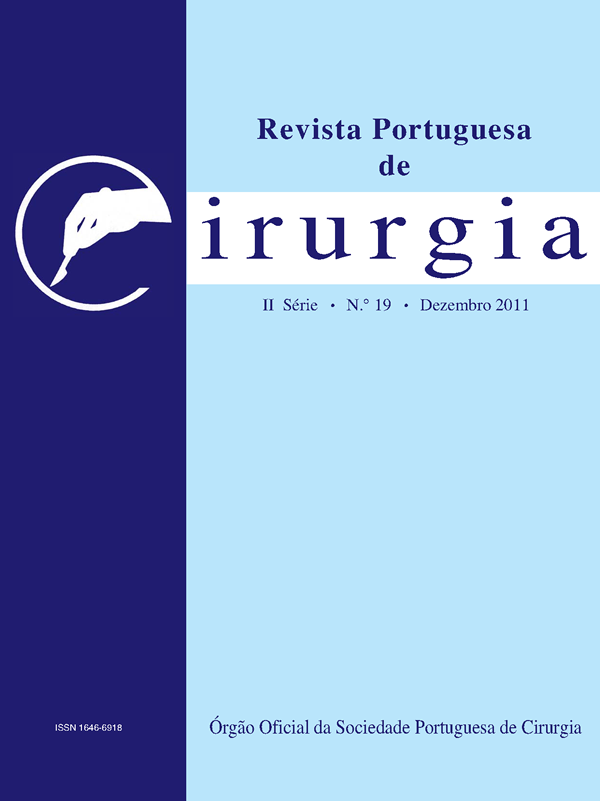Lesão Iatrogénica Biliar - Resultados de Inquérito Nacional 2005-2007
Abstract
The number and severity of bile duct injuries has increased since the introduction of laparoscopic cholecystectomy. This study determines their incidence, clinical presentation and management in the setting of Portuguese public hospitals, by means of a national inquiry promoted by the HPB chapter of the Portuguese Surgical Society. A 37% response rate was obtained from 29 hospitals having performed collectively 15533 cholecystectomies during a 3 year period. Out of 88 bile duct lesions, calculating an incidence of 0,57%, 10 were minor, due to leakage from the cystic duct. No biliary risk factors were present in 57% of the affected patients. Thirty lesions were recognized intra-operatively (35%), 34 during the first week, and 24 more than a week later. The most common presentation was a fistula (58%). Primary treatment was surgical in 71 patients, endoscopic in 9 and percutaneous (interventional radiology) in 8. Five patients died (5,7%). Almost 2 decades after the first laparoscopic cholecystectomy in Portugal the rate of bile duct injury is still high, treatment remains essentially surgical and fails in approximately one third of cases followed-up for 2,5 years.
Keywords: Cholecystectomy, laparoscopy, iatrogenic, treatment
Downloads
Downloads
Published
Issue
Section
License
Para permitir ao editor a disseminação do trabalho do(s) autor(es) na sua máxima extensão, o(s) autor(es) deverá(ão) assinar uma Declaração de Cedência dos Direitos de Propriedade (Copyright). O acordo de transferência, (Transfer Agreement), transfere a propriedade do artigo do(s) autor(es) para a Sociedade Portuguesa de Cirurgia.
Se o artigo contiver extractos (incluindo ilustrações) de, ou for baseado no todo ou em parte em outros trabalhos com copyright (incluindo, para evitar dúvidas, material de fontes online ou de intranet), o(s) autor(es) tem(êm) de obter, dos proprietários dos respectivos copyrights, autorização escrita para reprodução desses extractos do(s) artigo(s) em todos os territórios e edições e em todos os meios de expressão e línguas. Todas os formulários de autorização devem ser fornecidos aos editores quando da entrega do artigo.



